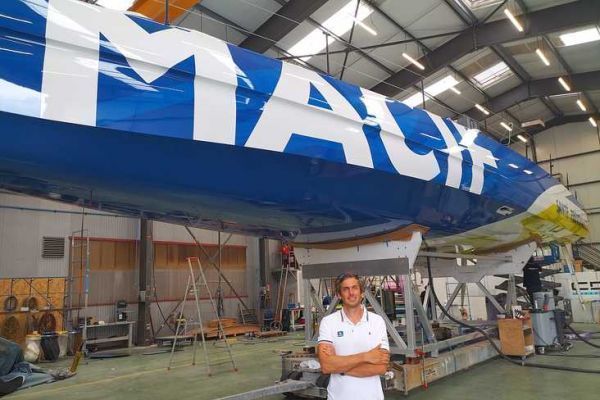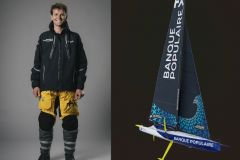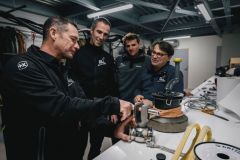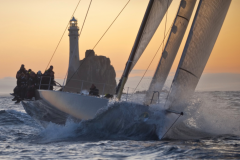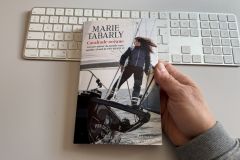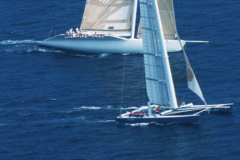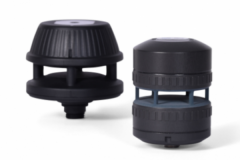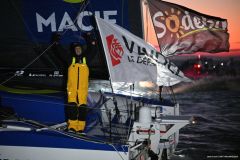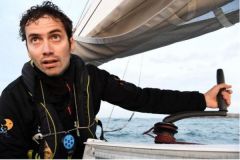A sailboat born of Apivia experience
For his second new IMOCA to be launched on June 24, 2023, skipper Charlie Dalin, 2nd in the last Vendée Globe, was able to draw on the experience of his previous boat, as he explained to us during a visit a few days before the launch: "The aim was to retain Apivia's strengths and erase its weaknesses, mainly downwind sailing in heavy seas. As for ergonomics, everything was thought through and tested on a one-scale plywood model, right down to the shape of the companionway step, which we redesigned several times."
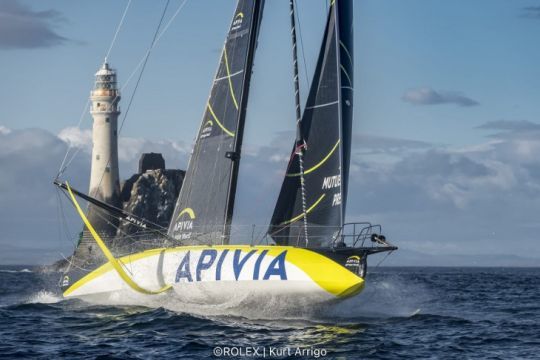
When asked about the influence of the new IMOCA boats launched since the last Vendée Globe, he recalls the time needed to design a boat: "This represents 60,000 man-hours and 50 people. The design began in autumn 2021, and the machining of the first parts in March 2022. For example, the choice to put the living area aft of the cockpit had been made before we noticed, when she was launched, that Malizia had made the same choice."
A hull for rough seas
When you look at the hull of the new IMOCA Macif, you can see a number of differences from Apivia, all geared towards performance, particularly in rough seas. The hull volumes have been brought forward, with a more imposing bow and a slightly narrower stern. A tulip-shaped forward section limits the wetted surface area, while clearing away water spray. A mid-height strake runs along the forward two-thirds of the boat, again clearing the water, as on powerboat hulls, which today reach comparable speeds. The freeboard is greater, as imposed by the rules.
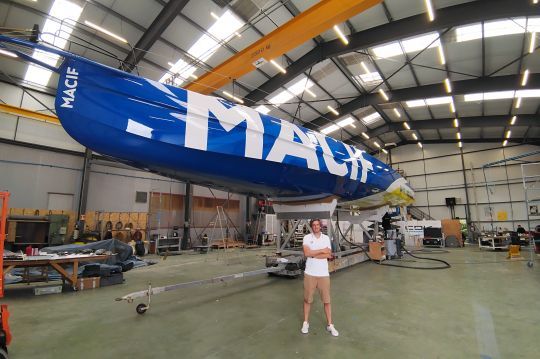
Charlie Dalin nevertheless adds: "The higher freeboard was already in our intention to better manage rough seas. We ran the new hull in a virtual digital tank with waves, and when you compare it with Apivia's, you reduce drag by 10 to 12% when it's at its peak and you run into a wave."
The frigate forward has also been removed to avoid shipping water on deck at high speed, but has been kept further aft to reduce the weight of both bulkheads and walls.
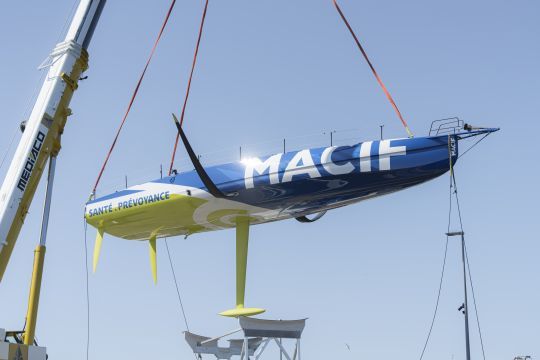
Bridge structure and aerodynamics
Unlike most of the new IMOCA boats launched, Macif retains a hollow deck forward, a choice that Charlie Dalin justifies structurally: "The bump is a little more on the side. We've done some finite element calculations which show that the forces circulate better."
The low roof is extended by a fairing forward of the mast. This provides both aerodynamic and volume advantages for boat stability tests. Deck circulation remains close to that of the old boat, even if access to the interior is more advanced.
The raised aft basin facilitates single-handed sail handling, eliminating the need for a halyard.
A condensed, ventilated living and working space
The other major change from Apivia is the inversion of the living area and the manoeuvring cockpit. The latter is positioned close to the mast step, while the living area is aft. Access to the cockpit is via 2 steps and two panels with multiple opening stages. Charlie Dalin explains: "When it was hot, we had the choice of getting wet from perspiration or from water coming in if we left the panel open. So we added a small ventilation hatch on the rear panel and the option of opening it while protecting the companionway."
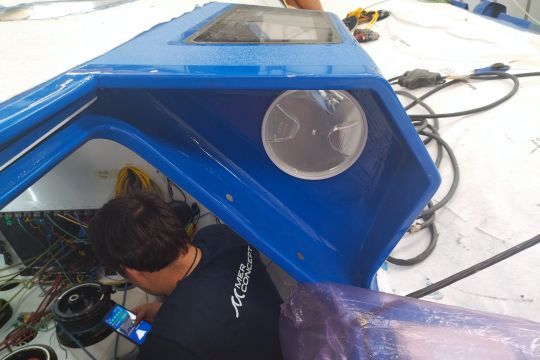
Spaces are condensed, to limit travel. The skipper explains: "The winch cabinet is more compact and I can access it without standing up. We also worked on the bubble for better visibility by changing the angles for larger glazing. By moving the cockpit forward, we also gained 10 cm in height. I can almost stand up!
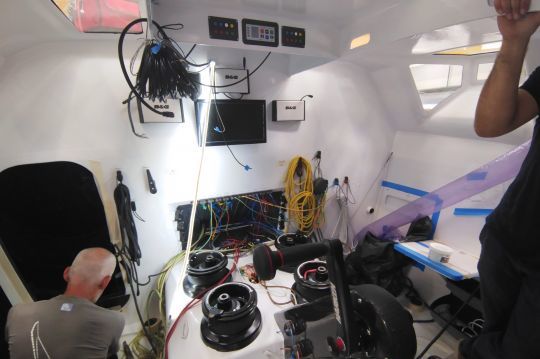
In the living area, movement is also limited, with a bunk on starboard and a morphological seat on port from which the sailor can reach his chart table, as well as his stove. "Everything is in one place. I used to have to matoss and move from one edge to the other. I did everything in a semi-seated position. Now I'll eat sitting down. And the winch column is only 1.50 m away."
Focusing time
For Charlie Dalin, it's time to make the boat more reliable, with a goal of 30,000 miles between now and the Vendée Globe 2024, which seems achievable: " We're aiming for a complete loop before the Vendée Globe to test the equipment. Apivia was launched later and then there was the Covid. Now there's one more transatlantic race. Most of the team was on the Apivia team. So we're starting from less of a distance."
